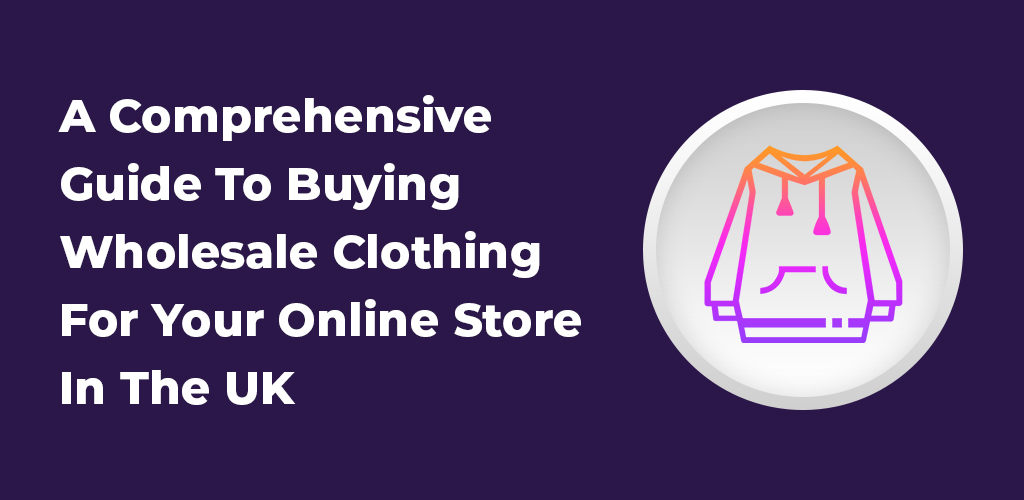A Comprehensive Guide To Buying Wholesale Clothing For Your Online Store In The USA
Introduction:
It can be exciting and satisfying to set out on the adventure of opening an online clothes store in the USA. But if you want to make sure your business succeeds, you must find premium goods at reasonable costs. Making the decision to buy apparel in bulk is a wise move that gives you access to a wide selection of outfits while increasing your profit margins. This blog post is a thorough how-to manual that will help you through the process of buying wholesale clothing for your USA-based online shop. We want to help you build a successful and growing business by giving you insightful information and enabling you to make wise decisions.
1. Identify Your Target Market:
Before diving into the world of wholesale clothing, it’s crucial to define your target market. Consider factors such as age group, gender, style preferences, and price range. Finding the best wholesale clothing providers will be aided by being aware of the needs and preferences of your target market.
2. Research Wholesale Vendors:
Find trustworthy wholesale clothes providers in the USA by doing careful research. Find suppliers who are knowledgeable about your market, deliver top-notch goods at reasonable costs, offer competitive pricing, and give dependable shipping and customer support. Online directories, trade shows, and industry publications are excellent resources for finding potential suppliers.
3. Verify Supplier Credentials:
Once you have a list of potential suppliers, verify their credentials. Check if they are registered businesses, read customer reviews and testimonials, and evaluate their reputation in the industry. It’s also important to ensure they comply with ethical and sustainable practices if these values align with your brand.
4. Request Samples:
Before committing to a wholesale supplier, request samples of the clothing items you are interested in. This step allows you to assess the quality, fabric, fit, and overall appeal of the garments. It’s advisable to order samples from multiple suppliers for comparison purposes. Pay attention to details like stitching, durability, and finishing.
5. Determine Pricing and Profit Margins:
Calculate your pricing strategy and profit margins based on the wholesale prices provided by the suppliers. Consider factors such as shipping costs, taxes, packaging materials, and marketing expenses. Ensure that your final retail price is competitive in the market while allowing you to maintain a healthy profit margin.
6. Place Orders and Negotiate:
Once you have chosen your wholesale clothing suppliers, negotiate pricing and terms. Depending on the supplier and order quantity, you may be able to negotiate discounts or better payment terms. Be professional, clear, and communicative throughout the process to build a strong working relationship with your suppliers.
7. Keep Up with Fashion Trends:
The fashion industry is dynamic, and staying up-to-date with the latest trends is essential for a successful online clothing store. Regularly research fashion trends, attend trade shows, and follow influencers and fashion blogs to identify emerging styles and popular designs. This knowledge will help you make informed decisions when selecting clothing items for your store.
8. Maintain Inventory Management:
Efficient inventory management is crucial to avoid stock outs and oversupply. Implement inventory management software or systems that track sales, monitor stock levels, and automate reordering when necessary. Regularly analyze sales data and adjust your inventory to meet customer demand effectively.
9. Build Strong Customer Relationships:
In the competitive online marketplace, building strong customer relationships is vital. Provide excellent customer service, respond promptly to inquiries, and handle returns and exchanges efficiently. By creating a positive shopping experience, you’ll encourage customer loyalty and word-of-mouth recommendations.
Where to Buy Wholesale Clothing in the USA: A Comprehensive Guide
Finding reliable wholesale suppliers can be a challenge, but with the right knowledge and resources, you can discover trustworthy sources for your inventory.
1. Trade Shows and Exhibitions:
Attending trade shows and exhibitions dedicated to the fashion industry is an excellent way to connect with wholesale clothing suppliers in the USA. These events provide an opportunity to explore a wide range of suppliers, interact with them face-to-face, and examine their product offerings firsthand. Some prominent trade shows in the USA include Pure London, Moda, and The London Textile Fair.
2. Online Wholesale Marketplaces:
Online wholesale marketplaces offer a convenient platform to connect with multiple wholesale clothing suppliers in one place. These platforms provide a wide selection of garments, allowing you to compare prices, quality, and styles. Some popular online wholesale marketplaces in the USA include Alibaba, Wholesale Deals, and Wholesale Clearance USA.
3. Wholesale Directories:
Wholesale directories compile comprehensive lists of wholesale suppliers across various industries, including fashion. These directories can help you discover reputable clothing wholesalers in the USA. Some notable directories include SaleHoo, TopTenWholesale, and Wholesale Scout. It’s important to research and verify the credentials of the suppliers listed in these directories before making any commitments.
4. Local Fashion Districts and Wholesale Centers:
Certain areas in the USA, such as Manchester, Birmingham, and London, have established fashion districts or wholesale centers where you can find numerous clothing wholesalers in close proximity. These districts often house showrooms, warehouses, and outlets that cater to both independent retailers and larger businesses. Visiting these areas allows you to explore different wholesalers, negotiate deals, and source your inventory efficiently.
5. Manufacturer Directories and Agents:
Connecting directly with clothing manufacturers or their agents can provide access to wholesale prices and a broader selection of garments. Manufacturers may have minimum order requirements, but they often offer more competitive pricing and customization options. Research manufacturer directories or hire agents who can assist you in finding suitable clothing manufacturers in the USA.
6. Local Networking and Referrals:
Networking within the local fashion industry can help you uncover hidden gems and connect with reliable wholesale clothing suppliers. Attend industry events, join fashion-related groups, and build relationships with fellow retailers, designers, and industry professionals. They can provide valuable recommendations and referrals to trusted wholesale suppliers they have worked with.
7. Social Media Platforms:
Social media platforms, especially Instagram, have become popular spaces for fashion influencers, designers, and wholesalers to showcase their products. Follow relevant hashtags, engage with fashion-focused accounts, and reach out to potential suppliers directly. Many wholesalers promote their offerings on social media platforms and may even provide exclusive deals or discounts to their followers.
8. Direct Approaches to Brands and Designers:
If you have a specific brand or designer in mind whose products align with your target market, consider reaching out to them directly. Some brands and designers offer wholesale programs or collaborate with retailers to distribute their clothing. Research their websites, contact them through email or phone, and inquire about their wholesale opportunities.
Finding reliable and reputable suppliers:
When it comes to buying wholesale clothing, finding reliable and reputable suppliers is essential for the success of your business. Properly vetting suppliers ensures that you source high-quality garments at competitive prices, maintain a consistent inventory, and deliver customer satisfaction.
1. Research and Background Check:
Conduct thorough research on potential wholesale clothing suppliers. Visit their websites, examine their product range, and explore their company history and values. Look for any customer testimonials, reviews, or ratings available online. This initial research will give you a general sense of the supplier’s reputation and reliability.
2. Verify Supplier Credentials:
Ensure that the supplier is a legitimate and registered business entity. Check if they have the necessary licenses and certifications to operate in the clothing industry. Look for any affiliations with industry organizations or trade associations, as this can indicate their commitment to ethical practices and quality standards.
3. Request Samples:
Request samples of the clothing items you are interested in before making any significant commitments. This step allows you to assess the quality, fit, and overall appeal of the garments. Look for attention to detail in stitching, fabric quality, and durability. Evaluating samples firsthand helps you determine if the supplier’s products align with your brand’s standards.
4. Inquire About Minimum Order Quantities (MOQs):
Ask the supplier about their minimum order quantities (MOQs). MOQs vary among suppliers, and it’s important to find a balance between your budget and inventory requirements. Consider your sales projections and storage capacity when negotiating MOQs. Suppliers with flexible MOQs can accommodate your specific business needs.
5. Evaluate Pricing and Terms:
Compare the pricing structures and payment terms of different wholesale suppliers. Consider factors such as unit price, volume discounts, shipping costs, and payment methods. Ensure that the pricing aligns with your target profit margins and the overall value provided by the supplier. Transparent and favorable payment terms are also crucial for maintaining a healthy cash flow.
6. Assess Quality Control and Return Policies:
Inquire about the supplier’s quality control processes and return policies. A reliable supplier should have measures in place to maintain consistent product quality and handle any defective or unsatisfactory items. Understand their return and refund policies, including any associated costs or time frames. A supplier with a customer-centric approach will be responsive to resolving any issues that may arise.
7. Consider Ethical and Sustainable Practices:
Increasingly, customers are conscious of ethical and sustainable practices. If these values align with your brand, ensure that your wholesale clothing suppliers follow similar principles. Inquire about their sourcing methods, labor practices, and environmental initiatives. Certifications such as Fair Trade or organic certifications can provide assurance in this regard.
8. Communication and Responsiveness:
Evaluate the supplier’s communication and responsiveness. Prompt and clear communication is crucial for smooth transactions, order updates, and issue resolution. Consider how quickly they respond to your inquiries, whether they offer multiple communication channels, and their willingness to address your concerns. Good communication fosters a strong and reliable supplier relationship.
9. Request References:
Ask the supplier for references from their existing or previous customers. Contact these references to gain insights into their experiences with the supplier. Inquire about factors such as product quality, delivery times, customer service, and overall satisfaction. Hearing from other retailers who have worked with the supplier can provide valuable firsthand feedback.
Conclusion:
Sourcing wholesale clothing for your online store in the USA can be a rewarding endeavor when approached strategically. By following the steps outlined in this guide, you can identify reliable wholesale suppliers, select high-quality garments, and stay on top of fashion trends. Remember to maintain good inventory management practices and prioritize exceptional customer service to set your online clothing store apart from the competition. Thoroughly research and verify suppliers, compare pricing and quality, and build strong relationships to ensure a consistent and profitable inventory supply. With diligent effort and smart sourcing strategies, you can establish a thriving retail business in the USA fashion market.



DropShip products from verified suppliers to diversify your inventory and scale your eCommerce business